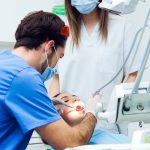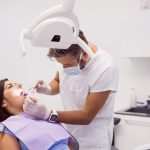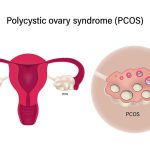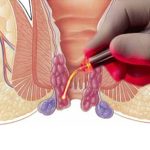Thyroid Eye Disease (TED), also known as Graves’ Orbitopathy or Thyroid-Associated Ophthalmopathy, is a complex and often misunderstood condition. Many people recognize it only by its most visible symptom—bulging eyes—but TED goes far beyond that. It can significantly impact eye health, appearance, and overall quality of life if not diagnosed and treated in time.
TED is an autoimmune inflammatory disorder that affects the tissues around the eyes, including the muscles, eyelids, tear glands, and fatty tissues. It is most commonly associated with hyperthyroidism, especially Graves’ disease, but it can also occur in patients with hypothyroidism or even normal thyroid function.
More Than Cosmetic – The Real Symptoms
While bulging eyes (known as proptosis) are a hallmark of TED, they are just one part of a broader spectrum of symptoms. Patients may experience:
- Redness and swelling of the eyes and eyelids
- Dryness, grittiness, or excessive tearing
- Double vision (diplopia) due to inflamed eye muscles
- Eye pain or pressure, especially when moving the eyes
- Eyelid retraction, where the upper eyelid is pulled back too far
- Light sensitivity (photophobia)
- In severe cases, vision loss due to pressure on the optic nerve
These symptoms can range from mild to severe and often develop gradually over time. TED may occur in phases—initially inflammatory and active, followed by a chronic, fibrotic stage.
The Thyroid-Eye Connection
Thyroid Eye Disease results from an immune system malfunction. In TED, the immune system mistakenly targets proteins in the muscles and tissues around the eyes, causing inflammation, swelling, and tissue remodeling. This response is often triggered by the same antibodies that affect the thyroid gland in Graves’ disease.
Interestingly, the severity of eye disease does not always match the severity of thyroid dysfunction. A patient with well-controlled thyroid levels can still experience active TED. Therefore, regular eye check-ups are critical for those with thyroid issues.
Diagnosis and Treatment
Diagnosing TED involves a detailed clinical examination, imaging tests such as CT or MRI, and thyroid function tests. If caught early, TED can be managed effectively to prevent long-term damage.
Treatment depends on the stage and severity of the disease and may include:
- Lubricating eye drops or gels for dryness
- Steroid medications to reduce inflammation
- Immunosuppressive therapy in active disease
- Radiotherapy in selected cases
- Corrective surgery for muscle or eyelid issues in the inactive phase
- Orbital decompression surgery in severe proptosis or optic nerve compression
Managing thyroid hormone levels is also essential. Smoking is a major risk factor for TED and quitting significantly improves outcomes.
Early Detection Saves Sight
TED can be visually and emotionally distressing. However, with early diagnosis and expert care, patients can regain comfort and protect their vision.
If you notice any changes in your eyes—especially if you have a thyroid condition—don’t wait.
Consult Dr. Rachana Tiwari Patil, Consultant Ophthalmologist at Chetna Multispeciality Hospital, Chinchwad. She specializes in the diagnosis and management of Thyroid Eye Disease with a compassionate and individualized approach.
For Consultation Contact us on 9168690448 / 9158681123
Website – www.chetnahospital.co.in
Address – Chetna Hospital, Sambhajinagar, MIDC, G Block, Near Rotary Club, Chinchwad 411019
.
.
.
#hospital#pune#pcmc#chinchwad#medical#medicalservices#dryeyetreatment#dryeyerelief#dryeyedisease#dryeyetherapy#catract#catractsurgery#catracteyesurgery#catracteyeoperation#eyedoctor#eye#glaucoma#conjunctivitis#ophthalmologist#eyediseases#eyepain#pinkeye#hazeleyes#myopia#eyeinfection#amblyopia#dryeyesyndrome#eyeproblems#motibindu#motibinduoperation













